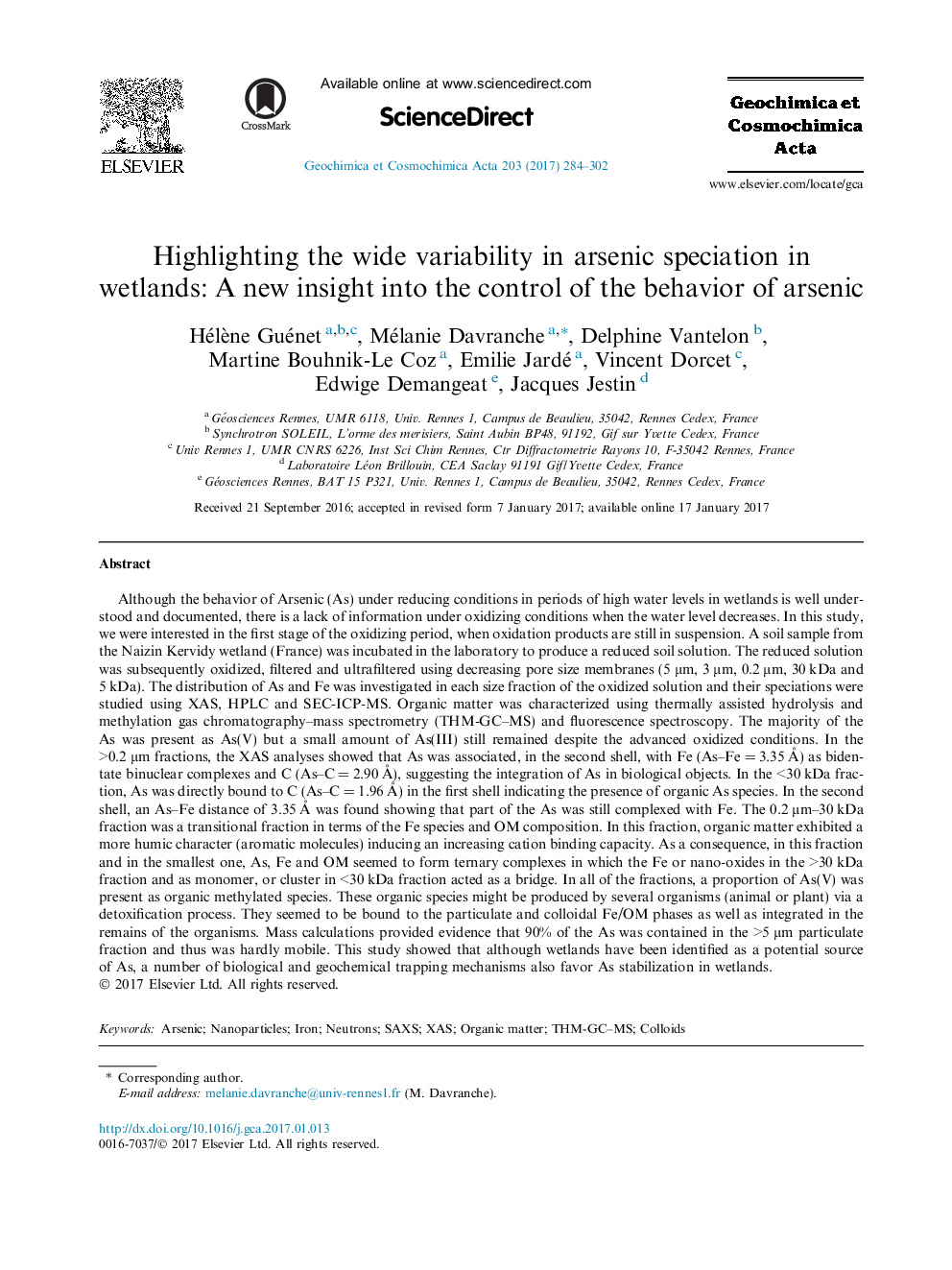| Article ID | Journal | Published Year | Pages | File Type |
|---|---|---|---|---|
| 5783601 | Geochimica et Cosmochimica Acta | 2017 | 19 Pages |
Abstract
Although the behavior of Arsenic (As) under reducing conditions in periods of high water levels in wetlands is well understood and documented, there is a lack of information under oxidizing conditions when the water level decreases. In this study, we were interested in the first stage of the oxidizing period, when oxidation products are still in suspension. A soil sample from the Naizin Kervidy wetland (France) was incubated in the laboratory to produce a reduced soil solution. The reduced solution was subsequently oxidized, filtered and ultrafiltered using decreasing pore size membranes (5 μm, 3 μm, 0.2 μm, 30 kDa and 5 kDa). The distribution of As and Fe was investigated in each size fraction of the oxidized solution and their speciations were studied using XAS, HPLC and SEC-ICP-MS. Organic matter was characterized using thermally assisted hydrolysis and methylation gas chromatography-mass spectrometry (THM-GC-MS) and fluorescence spectroscopy. The majority of the As was present as As(V) but a small amount of As(III) still remained despite the advanced oxidized conditions. In the >0.2 μm fractions, the XAS analyses showed that As was associated, in the second shell, with Fe (As-Fe = 3.35 Ã
) as bidentate binuclear complexes and C (As-CÂ =Â 2.90Â Ã
), suggesting the integration of As in biological objects. In the <30Â kDa fraction, As was directly bound to C (As-CÂ =Â 1.96Â Ã
) in the first shell indicating the presence of organic As species. In the second shell, an As-Fe distance of 3.35Â Ã
was found showing that part of the As was still complexed with Fe. The 0.2 μm-30 kDa fraction was a transitional fraction in terms of the Fe species and OM composition. In this fraction, organic matter exhibited a more humic character (aromatic molecules) inducing an increasing cation binding capacity. As a consequence, in this fraction and in the smallest one, As, Fe and OM seemed to form ternary complexes in which the Fe or nano-oxides in the >30 kDa fraction and as monomer, or cluster in <30 kDa fraction acted as a bridge. In all of the fractions, a proportion of As(V) was present as organic methylated species. These organic species might be produced by several organisms (animal or plant) via a detoxification process. They seemed to be bound to the particulate and colloidal Fe/OM phases as well as integrated in the remains of the organisms. Mass calculations provided evidence that 90% of the As was contained in the >5 μm particulate fraction and thus was hardly mobile. This study showed that although wetlands have been identified as a potential source of As, a number of biological and geochemical trapping mechanisms also favor As stabilization in wetlands.
Related Topics
Physical Sciences and Engineering
Earth and Planetary Sciences
Geochemistry and Petrology
Authors
Hélène Guénet, Mélanie Davranche, Delphine Vantelon, Martine Bouhnik-Le Coz, Emilie Jardé, Vincent Dorcet, Edwige Demangeat, Jacques Jestin,
